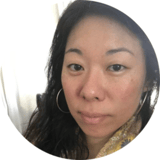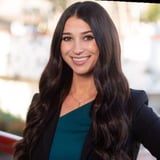Log in or create a free Rosenverse account to watch this video.
Log in Create free account100s of community videos are available to free members. Conference talks are generally available to Gold members.
Summary
The third in a series of discussions centered around Climate UX. To make an impact on the climate, many different audiences will need to understand and use climate science. But the science is complex and evolving rapidly. How might we best approach it as translators and facilitators? Through case studies and discussion you’ll learn how four designers are doing this today. Panelists: Ted Booth, HK Dunston, Andrew Otwell; Moderated by: Victor Lombardi
Key Insights
-
•
Climate UX involves translating highly complex and evolving scientific data into usable, understandable formats tailored to different audiences like journalists, scientists, and consumers.
-
•
Victor Lombardi’s Climate Shift Index uses real-time algorithms to model climate change attribution for weather events, making attribution science accessible for daily media use.
-
•
Scientists strongly prefer literal, detailed representations of data over metaphorical or simplified visuals, as abstraction can cause mistrust and suspicion.
-
•
Designing for scientists requires embracing their mental models—frequently based on Excel-like grids and ‘clunky’ graphs—instead of pushing novel visualizations.
-
•
Ted Booth’s startup uses ambient sensing (monitoring the environment rather than equipment directly) combined with AI to predict HVAC system efficiency and maintenance needs.
-
•
Invention in climate tech often involves creating new units of measure and visualization approaches, like degrees Fahrenheit per hour to represent HVAC performance.
-
•
HK emphasizes the role of culture, art, and storytelling alongside science to interpret and react to climate change, as science alone cannot guide human response.
-
•
Learning to design in scientific domains often requires humility, asking many questions, and grappling with unfamiliar foundational knowledge rather than relying on metaphor.
-
•
Science prioritizes avoiding false positives (identifying phenomena that don’t exist) over missing some phenomena, which influences how risk and catastrophe are communicated.
-
•
Designers can provide cultural cover or guardrails that enable scientists to communicate nuanced and complex findings to broader audiences effectively.
Notable Quotes
"The maps lose scientific accuracy but gain understanding by simplifying complex data into color keys that people interpret quickly."
"Scientists want to understand how things work at the bottom level of detail; they don’t want metaphors or abstractions that feel like black boxing."
"In science, it’s better to miss a phenomenon than to misidentify one that doesn’t really exist."
"Excel is the mental model of the scientific research world—a two-dimensional grid of literal data."
"Sometimes you just have to plant a flag and say this is what we can do, even if the math and boundaries are complicated."
"Climate is not operating in geologic time anymore—we face radical, rapid changes unlike past eras."
"For scientists, the cost of being wrong is very high, while designers iterate constantly, embracing failure as part of the process."
"Designers bring a unique cultural perspective to multidisciplinary scientific teams, helping interpret and communicate complex data."
"There is a romance and incredible creativity in data visualization, but sometimes simpler is better, letting the data speak for itself."
"Learning scientific domain knowledge requires humility—being willing to say ‘I don’t get it, can you explain differently?’ and asking dumb questions."
Or choose a question:
















More Videos

"If you’re doing research with people with disabilities, consider using the Accessible Usability Scale to get more accurate insights."
Sam ProulxSUS: A System Unusable for Twenty Percent of the Population
December 9, 2021

"Hiring specs for federal designers don’t exist as we expect—jobs are often classified as public affairs or other unrelated titles."
Michael LandEstablishing Design Operations in Government
February 18, 2021

"I spent too much time trying to change company culture and should have focused more on just getting things done."
Shipra KayanHow we Built a VoC (Voice of the Customer) Practice at Upwork from the Ground Up
September 30, 2021

"A workshop helps people map their skills, identify gaps, and make specific goals for career jumps."
Ian SwinsonDesigning and Driving UX Careers
June 8, 2016

"If you’re managing over 100 design practitioners, it makes sense to start looking at a chief of staff role."
Isaac HeyveldExpand DesignOps Leadership as a Chief of Staff
September 8, 2022

"Controls like insurance qualifiers and legal agreements were necessary guardrails for this new way of working."
Amy EvansHow to Create Change
September 25, 2024

"Teleportation lets us move throughout the organization by building tools that gather disparate data for real-time decision making."
Kate Koch Prateek KalliFlex Your Super Powers: When a Design Ops Team Scales to Power CX
September 30, 2021

"Beliefs are habits of action; they are the rules that guide how we decide to act."
Dave GrayLiminal Thinking: Sense-making for systems in large organizations
May 14, 2015

"The challenge is whether your organization has the energy to overcome cultural and technical barriers driving researchers back to disposable knowledge."
Matt DuignanAtomizing Research: Trend or Trap
March 30, 2020



















